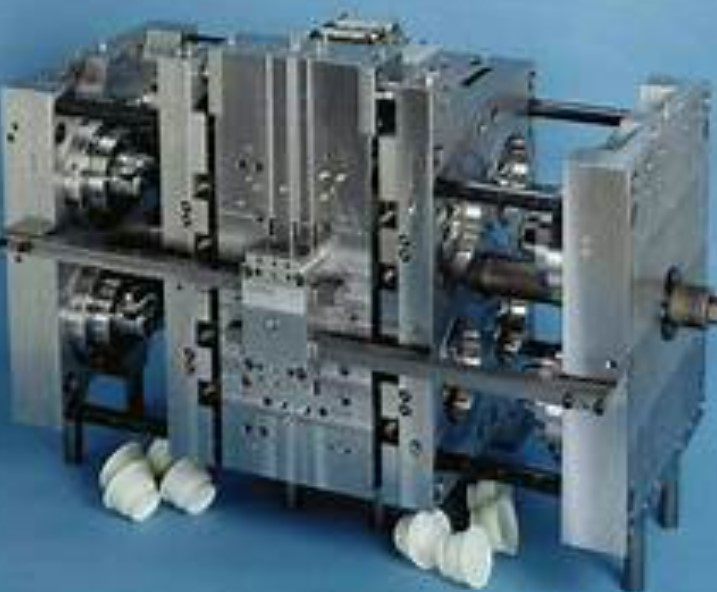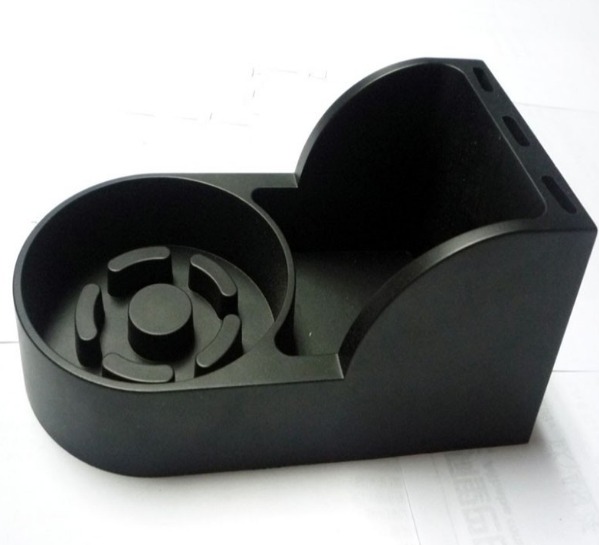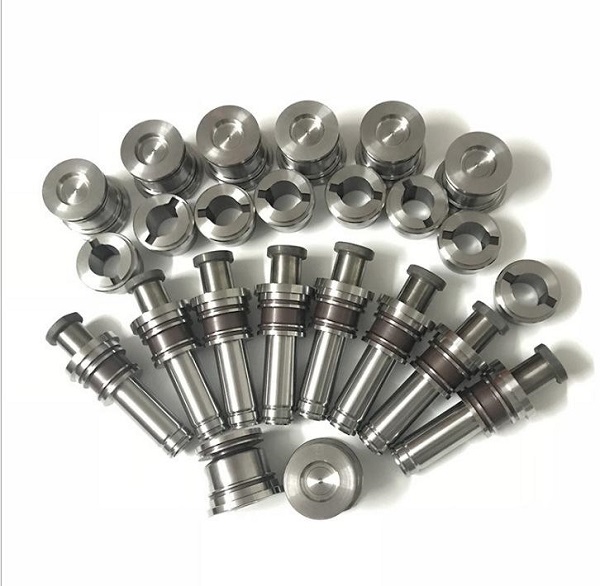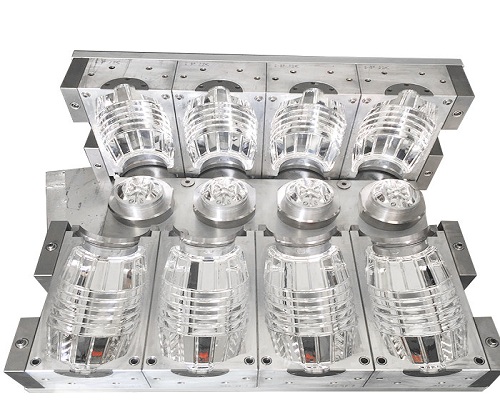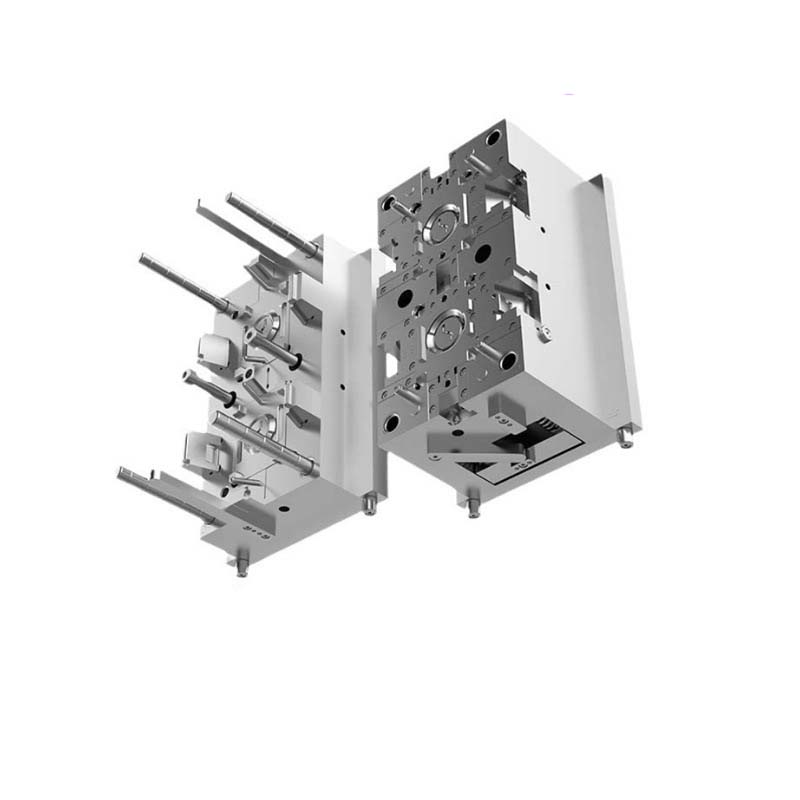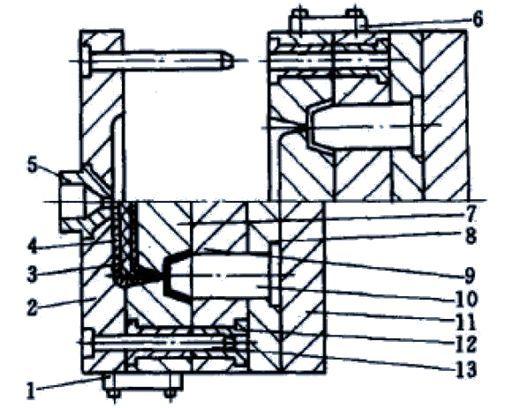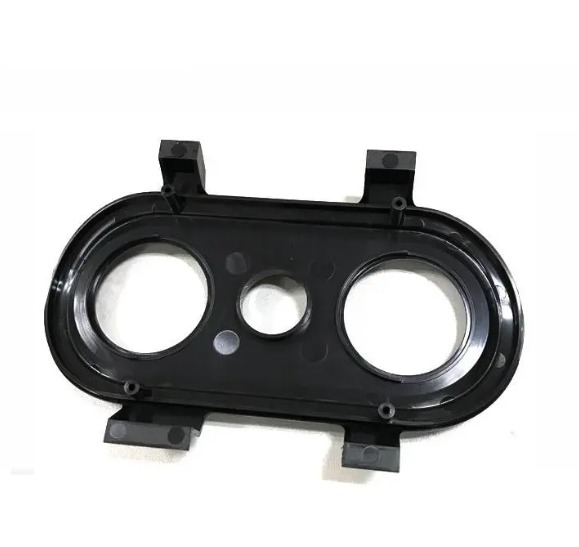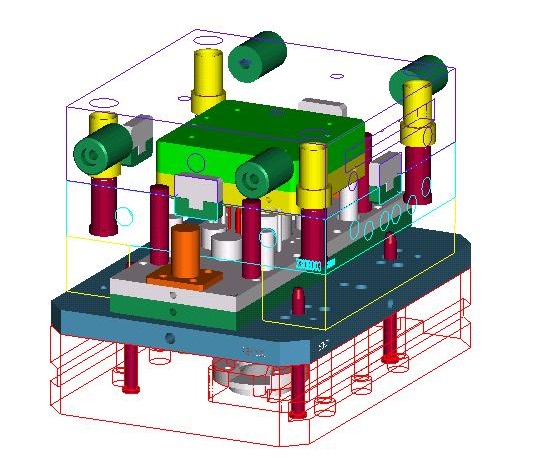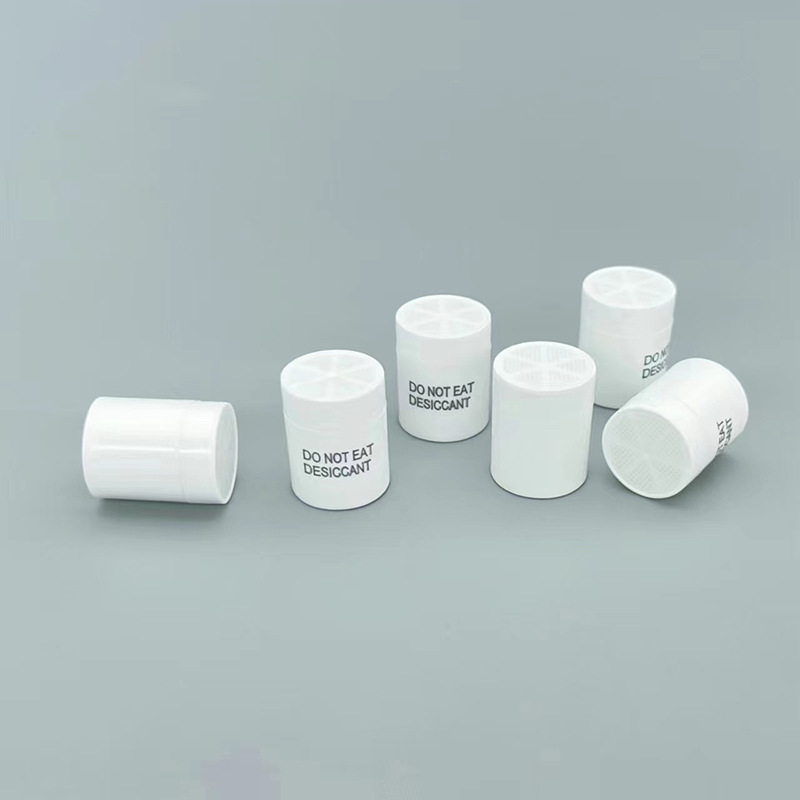Introduction
What Are Tooling Molds?
In the vast and complex world of manufacturing, tooling molds stand as the unsung heroes that play a pivotal role in shaping the products we use in our daily lives. From the smallest components of a smartphone to the large parts of an automobile, tooling molds are the key tools that enable the mass - production of high - quality, consistent products.
Tooling molds can be defined as a specialized type of tool used in manufacturing processes to form, shape, or cut materials into a desired final product. They are typically made from durable materials such as steel, aluminum, or other alloys, which can withstand the high pressures, temperatures, and wear - and - tear associated with the manufacturing operations.
For Yigu Technology example, in plastic injection molding, a common manufacturing process, a tooling mold is used to create the cavity into which molten plastic is injected. Once the plastic cools and solidifies, it takes on the exact shape of the mold cavity, producing a plastic part. This process allows for the production of thousands or even millions of identical plastic parts with high precision and efficiency. In metal casting, tooling molds are used to create the molds for casting molten metal, resulting in metal parts with complex shapes and high dimensional accuracy.
The importance of tooling molds in manufacturing cannot be overstated. They are the enablers of economies of scale, as mass - production using molds is far more cost - effective than producing parts individually. They also ensure product quality and consistency. Since each part is produced from the same mold, variations in size, shape, and other characteristics are minimized, which is crucial for industries such as automotive, aerospace, and electronics, where parts need to fit together precisely. Without tooling molds, the manufacturing of many of the products we rely on would be either prohibitively expensive or simply impossible. In the following sections, Yigu Technology will delve deeper into the different types of tooling molds, their components, and the materials used in their construction.
Components Inside Tooling Molds
Core and Cavity
The core and cavity are the heart and soul of a tooling mold. The core is the part of the mold that forms the internal features of a product, while the cavity forms the external shape. Together, they collaborate to create the exact shape of the final product.
For Yigu Technology example, in the production of a plastic bottle, the core would be the part that forms the hollow interior, while the cavity would shape the outer walls, neck, and threads. In a metal die - casting process for an automotive engine block, the core creates the internal channels for oil and coolant, and the cavity gives the block its overall external shape. The design of the core and cavity is highly specific to the product being manufactured. They are often made with high - precision machining to ensure tight tolerances. For instance, in the electronics industry, where components need to be extremely precise, the core and cavity of molds for manufacturing smartphone cases are designed with tolerances in the range of micrometers.
Ejection System
The ejection system is crucial for removing the finished product from the mold after the manufacturing process is complete. It typically consists of components such as ejector pins and an ejector plate.
Ejector pins are small, cylindrical rods that are placed strategically within the mold. When the mold opens, hydraulic or mechanical force is applied to the ejector plate. This plate then pushes the ejector pins forward, which in turn push the product out of the cavity. For example, in a plastic injection - molding process for making small plastic toys, ejector pins are placed at various points on the mold, such as at the base of the toy's legs or under its body parts. This ensures that the toy is evenly ejected from the mold without getting damaged. The design of the ejection system needs to be carefully planned. If the ejector pins are not placed correctly, the product may be ejected unevenly, leading to deformation or breakage.
Cooling and Heating Systems
Controlling the temperature of the tooling mold is essential for producing high - quality products, and this is where the cooling and heating systems come into play.
The cooling system, usually made up of a network of channels drilled into the mold, circulates a coolant (such as water or a special heat - transfer fluid) through the mold. This helps to remove the heat generated during the manufacturing process, such as when molten plastic is injected into the mold or when a metal is being cast. For example, in a large - scale plastic injection - molding operation for making automotive bumpers, the cooling channels are designed in a complex pattern to ensure even cooling of the large and irregularly shaped bumper. Uneven cooling can cause warping or shrinkage in the final product.
On the other hand, in some manufacturing processes, such as in the production of certain types of thermosetting plastics or when precision is required for a metal - forming process, a heating system may be necessary. Heating elements, like electric heaters or steam - based heating systems, are used to maintain a specific temperature within the mold. This ensures that the material cures or forms correctly. For instance, in the production of circuit boards using a mold, a heating system is used to maintain the right temperature for the resin to harden properly, which is crucial for the electrical and mechanical integrity of the circuit board.
Other Essential Components
There are several other small but vital components in a tooling mold. The locating ring, for Yigu Technology example, is used to accurately position the mold on the injection - molding machine or other manufacturing equipment. It ensures that the mold is centered correctly, which is essential for the proper alignment of all other components and for the smooth operation of the manufacturing process.
The sprue bushing is another important part. It is the component through which the molten material (such as plastic in injection molding or metal in casting) enters the mold. The sprue bushing has a specific shape and size to control the flow of the material, ensuring that it enters the mold cavity evenly. Without a properly functioning sprue bushing, issues like inconsistent filling of the mold cavity or material leakage can occur. Although these components may seem small compared to the core, cavity, or ejection system, they are indispensable for the overall functionality and efficiency of the tooling mold.
Types of Tooling Molds: A Comparative Table
Understanding the different types of tooling molds is crucial for manufacturers, as each type has its own unique characteristics, advantages, and limitations. The following Yigu Technology table provides a quick comparison of three common types of tooling molds: injection molds, die - casting molds, and forging molds.
| Mold Type | Working Principle | Application | Advantages | Disadvantages |
| Injection Molds | Inject molten material into cavity | Plastics manufacturing | High precision, complex shapes | High cost |
| Die - Casting Molds | High - pressure injection of molten metal | Metal parts production | High - strength parts | Limited material types |
| Forging Molds | Shape metal through compressive force | Metal forming | Good mechanical properties | High energy consumption |
Injection Molds
Injection molds are widely used in the plastics manufacturing industry. The working principle is relatively straightforward: molten plastic is injected under high pressure into a closed mold cavity. Once the plastic cools and solidifies, it takes on the shape of the cavity, and the finished plastic part can be ejected.
For example, in the production of plastic toys, injection molds are used to create the various components of the toys, such as the body, limbs, and accessories. The high precision of injection molds allows for the production of parts with intricate details and tight tolerances. This makes them ideal for manufacturing products like electronic housings, where a perfect fit of components is essential. Another advantage is their ability to produce complex shapes. Through the use of movable cores and slides within the mold, injection molds can create parts with undercuts, holes, and other complex features.
However, injection molds also have their drawbacks. One of the main disadvantages is the high cost. The design and manufacturing of injection molds require advanced machining techniques and high - quality materials, which can be expensive. Additionally, the setup time for injection molding can be long, especially for complex molds. This means that for small - batch production, the cost - effectiveness of injection molding may be limited.
Die - Casting Molds
Die - casting molds are primarily used for the production of metal parts. The process involves injecting molten metal, such as aluminum, zinc, or magnesium, into a mold cavity at high pressure. The high - pressure injection allows for the creation of parts with high dimensional accuracy and excellent surface finish.
Die - casting molds are commonly used in the automotive industry to produce engine blocks, transmission housings, and other critical components. The high - strength nature of the metal parts produced by die - casting makes them suitable for applications where durability and performance are crucial. Compared to injection molds, die - casting molds operate at much higher pressures. The molten metal used in die - casting also has different properties from molten plastic, which requires molds to be made from materials that can withstand the high temperatures and corrosive nature of the molten metal.
One limitation of die - casting molds is that they are generally limited to a few types of metals. The process is most effective with metals that have relatively low melting points and good fluidity when molten. This restricts the range of materials that can be used compared to some other manufacturing processes.
Forging Molds
Forging molds play a vital role in the metal - forming industry. In the forging process, a metal blank is placed between two forging dies. Pressure is then applied, either through a hammer or a press, causing the metal to deform and take on the shape of the mold. This process is different from injection and die - casting as it involves plastic deformation of the metal rather than pouring a molten material.
Forging molds are used to produce a wide range of products, from simple bolts and nuts to complex aerospace components. The mechanical properties of forged parts are often superior to those produced by other methods. Forged parts have a more refined grain structure, which results in higher strength, toughness, and fatigue resistance. The materials used in forging molds are typically high - strength steels that can withstand the high compressive forces during the forging process.
Nevertheless, forging molds also have some disadvantages. The forging process is energy - intensive, as it requires a significant amount of force to deform the metal. This can lead to higher production costs, especially when considering the energy consumption. Additionally, the production rate of forging is often lower compared to injection molding or die - casting, making it less suitable for high - volume production in some cases.
Conclusion
In summary, tooling molds are complex and integral components in the manufacturing industry. Their internal components, such as the core, cavity, ejection system, and cooling/heating systems, all work in harmony to ensure the production of high - quality products. Each component has its own unique function, and any malfunction or improper design of these components can significantly affect the quality and efficiency of the manufacturing process.
There are also different types of tooling molds, including injection molds, die - casting molds, and forging molds, each with its own set of characteristics, advantages, and limitations. Injection molds are excellent for producing high - precision plastic parts with complex shapes, but they come with a high cost. Die - casting molds are ideal for creating high - strength metal parts, yet they are restricted by the types of materials that can be used. Forging molds produce parts with superior mechanical properties but are energy - intensive and have a relatively low production rate.
Understanding the inner workings of tooling molds, their components, and the different types available is of utmost importance for manufacturers. It allows them to make informed decisions about which mold type to use for a particular product, how to design and maintain the molds effectively, and how to optimize the manufacturing process for better quality, efficiency, and cost - effectiveness. In the ever - evolving manufacturing landscape, continuous learning and improvement in the field of tooling molds are essential to stay competitive and meet the demands of consumers for high - quality products.
FAQs
- What is the most common material used for tooling molds?
Steel is one of the most common materials used for tooling molds due to its high strength, durability, and ability to withstand high pressures and temperatures. Aluminum is also used, especially when weight and cost are important factors, as it is lighter and less expensive than steel, but it may not be as durable in some high - stress applications.
- How often should tooling molds be maintained?
The frequency of mold maintenance depends on several factors, such as the type of mold, the manufacturing process it is used in, and the production volume. Generally, molds should be inspected regularly (e.g., after every production run or at least once a week for high - volume production). Routine maintenance tasks like cleaning, lubrication, and checking for wear and tear should be performed regularly, while more in - depth maintenance, such as replacing worn - out components, may be needed every few months to a year, depending on usage.
- Can the same tooling mold be used for different materials?
In some cases, a tooling mold can be used for different materials, but it depends on the properties of the materials. For Yigu Technology example, a mold designed for a particular type of plastic may be suitable for a similar - viscosity plastic with similar thermal properties. However, using a mold designed for plastic with a metal, like in die - casting, is not possible without significant modifications, as metals have much higher melting points and different flow characteristics compared to plastics.
